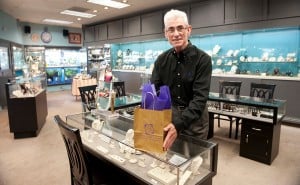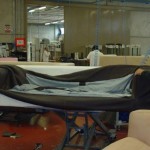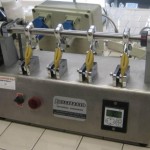
Click the above image to be taken to the New York Times article associated with this post.
As students in an operational management class, we study all issues involved with operating a business. We are taught that operating in an ethical manner is paramount and all-encompassing. That an organization’s leaders must be cognizant of the impact their decisions have internally and externally – specifically in regard to the environment. The article used for this post describes what happens when the government forces businesses to function in a certain way. I found this article intriguing and in reading it, I found myself extremely conflicted. Below is a brief synopsis.
_________________________________
More than two-dozen cities in California have enacted a ban on the use of plastic shopping bags and have begun charging between 5 to 10 cents to use a paper bag. The movement has created a divide between shop owners like Bill Hoffman – owner of Aptos Jewelers in Aptos, California – and their counties. Hoffman, who has been one of the more vocal opponents of the regulation, feels that charging his customers (who are often spending thousands in his store) for paper bags is crass. Hoffman also is of the belief that the way he packages his product is part of the experience he offers. He is offering a high-end product that requires high-end packaging. After filing with Santa Cruz County for an exemption from the ordinance, Hoffman was turned down.
The push toward reusable bags has also upset the plastics industry, which is pursuing legal action against counties in California that have enacted a plastic bag ban. Industry representatives claim that there is insufficient evidence to support that banning plastic bags will have any drastic impact on the environment.
Stephen Joseph, who is the primary voice and attorney for the Save the Plastic Bag Coalition, has argued that bans in cities that have a high tourist presence (such as San Francisco – which is initiating a plastic bag ban this month) will be particularly ineffective because tourists typically don’t travel with reusable shopping bags. This has led Joseph to deduce that tourists will begin buying reusable plastic bags when they arrive in a location, and will dispose of them upon their departure. This, of course, would make a huge dent in the purpose of the ban.
When questioned, many consumers voiced a frustration with the ban/paper bag charge, but expressed that it’s ultimately necessary.*
Questions to consider:
- How do you feel about a movement of this type?
- Should the government step in and ban materials that are harmful to the environment?
- Should it be up to the business owner to ensure he/she is operating his/her business in an environmentally responsible manner?
- Should consumers take the responsibility?
* The information provided in this post was drawn from the following New York Times article: http://www.nytimes.com/2012/09/29/business/energy-environment/communities-curb-use-of-paper-and-plastic-shopping-bags.html?pagewanted=all




